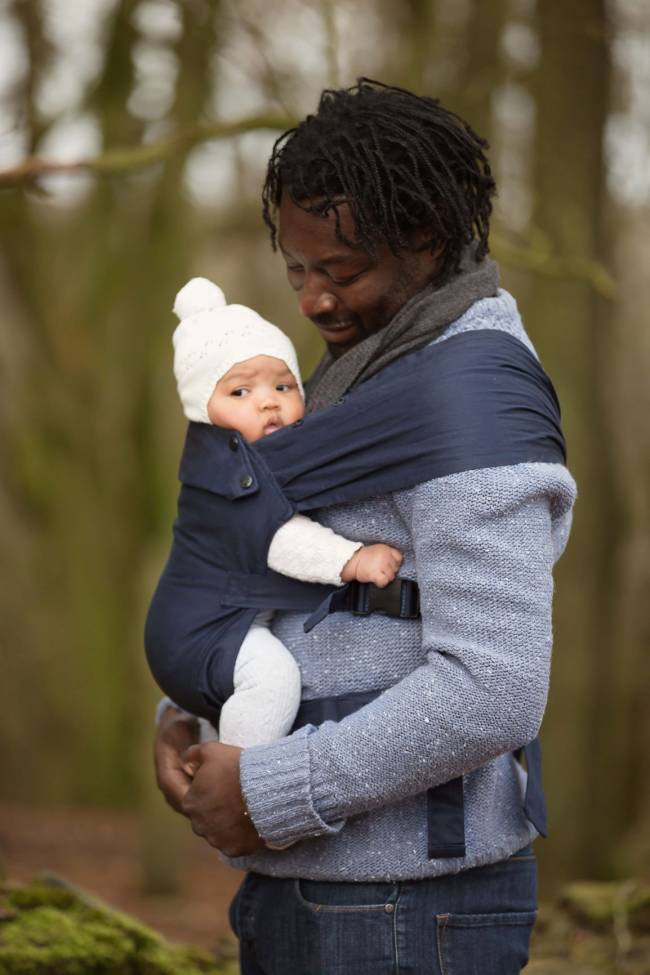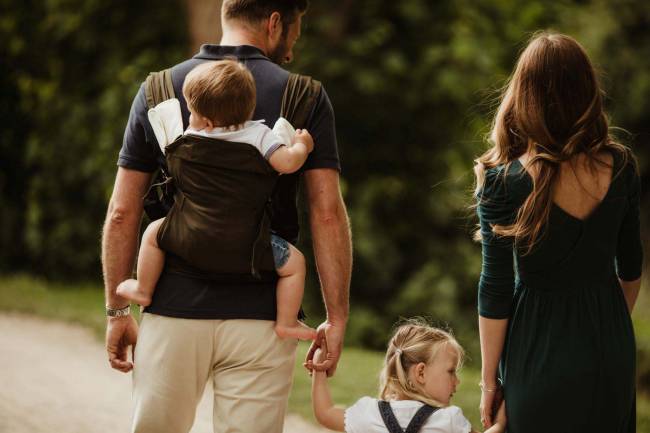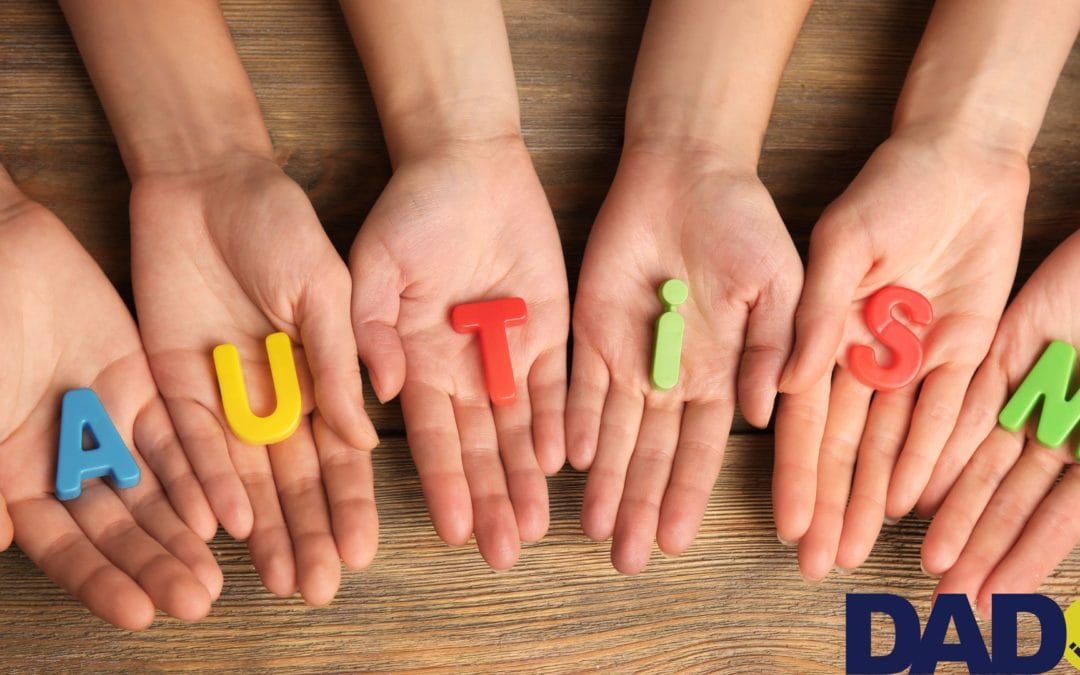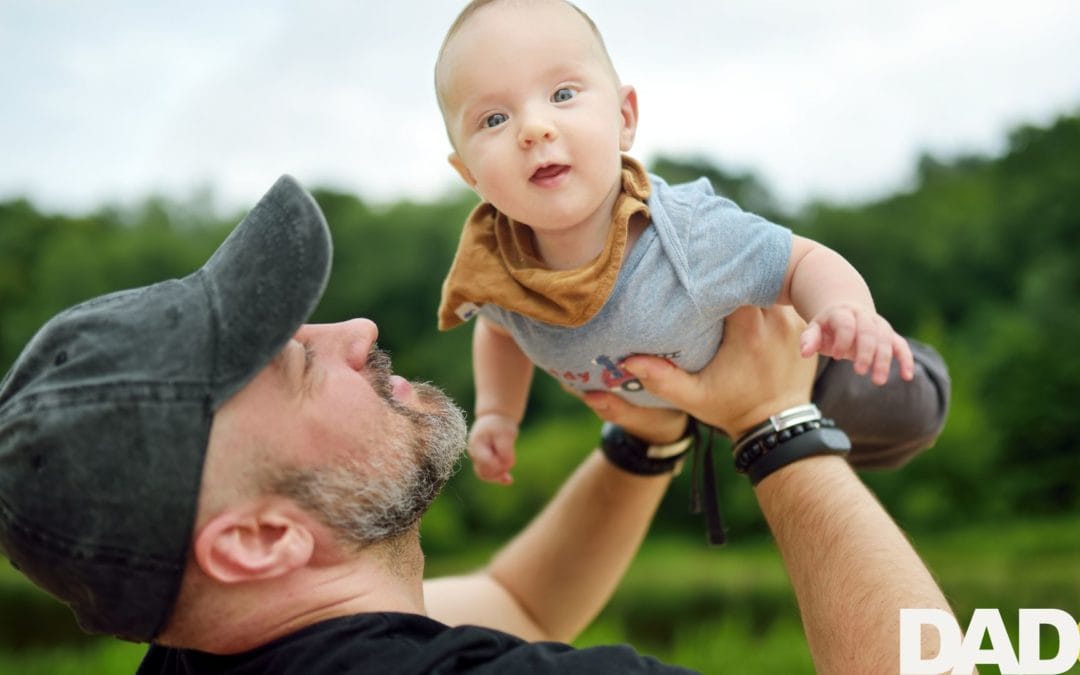When you become a Dad you are looking for every chance to bond with your baby (and support your partner!). Strapping on a baby carrier and holding your baby close is an extraordinary experience you shouldn’t miss out on.

Dad.info spoke with Emily Williamson professional carrying consultant, and founder of South London Slings about why Dads should carry babies too. “Practical and hands free” are two good reasons Emily thinks a good sling or carrier can be a life saver. Emily has worked with hundreds of families and knows some babies just “need to be held”. The research backs her up, some babies settle much better when they are carried [1], and babywearing is recommended for easing symptoms of colic and reflux, and helping babies to sleep.
Hands-Free
Dads who are back to work are short on precious time to bond with their baby and being hands free lets you get on with all the other things you need to do too while working on that bond. What’s not to like?

David, Dad of two remembers being a little unsure about baby wearing, “I think from the technical aspect it was a bit of a learning curve, working out where to click all the bits together and making sure the correct straps were tight. I’ll admit the childminder had to help me when I had no idea how to put it on!”. Dave though enjoyed the experience and would recommend trying it, “being close to my little one was amazing”. He just wanted us to let you all know that you should probably practice a few times before being left to put it on on your own.
Here are three reason why carrying baby supports their development and makes your life easier.
1. Movement
When carried, babies experience an automatic, deep relaxation; their heartrate slows, and their body moves into a calmer state [2]. The movement here is important; carrying your baby is more soothing than just holding them. This response is not conscious; it’s mediated by very primitive parts of the brain and nervous system. Carrying your baby essentially helps to switch off their body’s fight or flight reaction to stress. They’ll be calmer and can even digest more effectively when in this more relaxed state.
2. Oxytocin
Oxytocin is a hormone that’s linked to feelings of love and connection with others. In women it’s involved during the birth process and released during breastfeeding [3]. In both men and women Oxytocin is released during positive interaction and contact with their baby [4]. Higher levels of Oxytocin correspond with parents engaging more with their baby, reduced feelings of stress and anxiety, and a greater feeling of attunement [5]. Babywearing is a great way to give you extended periods of positive contact with your baby, promoting healthy emotional attachment [6] and reducing the effects of post natal depression [7].
3. Skin to Skin
There are so many research-supported benefits of skin to skin contact with your baby. It has been shown to stabilise a baby’s heart rate, breathing and temperature. It improves weight gain in smaller babies, and helps to establish and maintain successful breastfeeding [8]. And skin to skin contact is an awesome way to maximise that Oxytocin boost too!
So YES! Using a comfortable, safe sling or carrier really can calm your baby, support their development and make you feel happier too!
Safety First
Slings are used all over the world and have been for thousands of years but like with everything you do with your baby you need to think safety first. There is a simple mnemonic you can use to check your own sling – T.I.C.K.S – Tight, In View at ALL times, Close enough to Kiss, Keep Chin off the Chest & Supported Back – try finding a local sling consultant or sling meet if you have any concerns or queries.
Thanks to Izmi Baby Carrier for the expert advice.
The Izmi Carrier has been designed with these benefits and research in mind. The award-winning carrier is renowned for its adaptable design as it seamlessly combines the functionalities of a soft structured fabric sling, with the support of a buckled carrier. The multifunctional carrier cleverly adapts for use from newborn up until 18 months, meaning an abundance of cosy quality time for both the wearer and the new arrival!
Happy Babywearing!
References [1] Hunziker, U.A. & Barr, R.G. “Increased carrying reduces infant crying: a randomized controlled trial”. Paediatrics, (1986) [2] Esposito, G.*, Yoshida, S.*, et al. “Infant calming responses during maternal carrying in humans and mice”. Current Biology, (2013) *These authors contributed equally. [3] Pappas, S. “Oxytocin: Facts About the ‘Cuddle Hormone’” Live Science, (2015), https://www.livescience.com/42198-what-is-oxytocin.html [4] Gordon, I., Zagoory-Sharon, O., Leckman,J.F., Feldman, R. “Oxytocin and the Development of Parenting in Humans”. Biological Psychiatry, (2010). https://doi.org/10.1016/j.biopsych.2010.02.005 [5] Uvnas-Moberg K. The Oxytocin Factor: Tapping the Hormone of Calm, Love, and Healing(2003). Da Capo Press: Cambridge, MA. [6] Anisfeld E, Casper V, Nozyce M, & Cunningham N. “Does infant carrying promote attachment? An experimental study of the effects of increased physical contact on the development of attachment”. Child Development, (1990) [7] Peláez-Noguerast, M. al “Depressed Mothers’ Touching Increases Infants’ Positive Affect and Attention in Still-Face Interactions”. Child Development, (1996) [8] https://www.unicef.org.uk/babyfriendly/news-and-research/baby-friendly-research/research-supporting-breastfeeding/skin-to-skin-contact/











